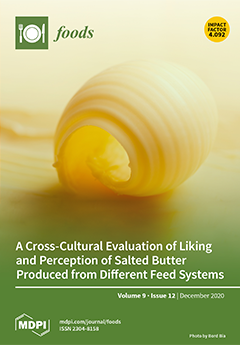Background: Rice is one of the most commonly consumed grains. It could be a good source of nutrients in a diet, but its consumption could also contribute to exposure to toxic elements. All rice products available on the Polish market are imported, which
[...] Read more.
Background: Rice is one of the most commonly consumed grains. It could be a good source of nutrients in a diet, but its consumption could also contribute to exposure to toxic elements. All rice products available on the Polish market are imported, which may pose a particular concern as to the safety of their consumption. The aim of our study was to estimate the content of As, Cd, Pb, and Hg in rice products and to assess the health risk indicators related to exposure to toxic elements consumed with rice products among the adult population in Poland. Methods: A total of 99 samples from 12 groups of rice products (basmati, black, brown, parboiled, red, wild, white rice and expanded rice, rice flakes, flour, pasta, and waffles) available in the Polish market were obtained. The content of Hg was determined using the atomic absorption spectrometry method (AAS). To measure As, Cd, and Pb, inductively coupled plasma-mass spectrometry (ICP-MS) was used. The health risk was assessed by calculating several indicators. Results: The average As, Cd, Pb, and Hg contents in all studied products were 123.5 ± 77.1 μg/kg, 25.7 ± 26.5 μg/kg, 37.5 ± 29.3 μg/kg, and 2.8 ± 2.6 μg/kg, respectively. Exceedance of the limit established by the Polish National Food Safety Standard was observed in one sample as regards the As content and exceedance of the European Commission standard in two samples for Hg. The samples of foods imported from European markets (
n = 27) had statistically higher As content (
p < 0.05) than those imported from Asian countries (
n = 53). The values of health risk indicators did not show an increased risk for the Polish adult population. However, the daily intake of 55 g of rice corresponds to the benchmark dose lower confidence limit (BMDL) for Pb. Conclusion: The studied rice products could be regarded as safe for consumption by the Polish population as far as the content of As, Cd, Pb, and Hg is concerned.
Full article






